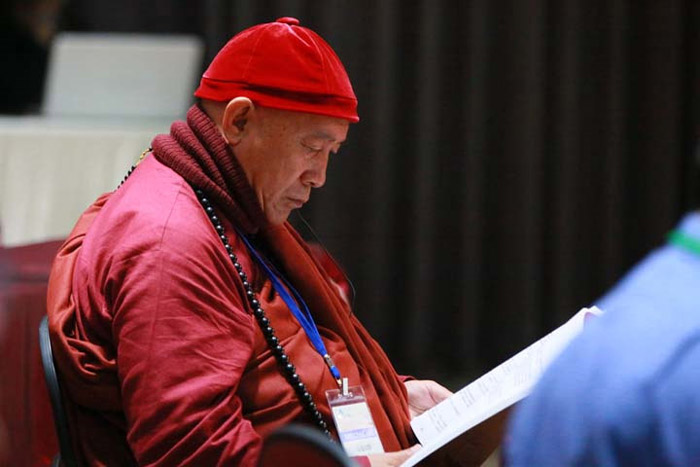Chan is the Mind School
 A: The Chan school is also called the “mind school.” But when you start thinking of it as the mind school, it’s no longer Chan.
A: The Chan school is also called the “mind school.” But when you start thinking of it as the mind school, it’s no longer Chan.Q: So Chan isn’t the mind?
A: It depends on what you mean by “mind.” It’s sometimes seen as having a material basis, like the heart, but that’s something that arises and ceases.
Q: Is it that the mind can’t be found, so Chan shouldn’t be thought of as the mind school?
A: Not really. Chan is the mind school, but this mind is not that mind.
Q: So “Chan is the mind, and the mind is Chan.” But what exactly does this mean?
A: Non-attachment is the mind; if there’s attachment, then it’s not the mind.
Q: So Chan is the mind free of attachment. In China the Chan school branched out into five main sects: Linji, Caodong, Fayan, Yunmen, and Guiyang. Is it likely that in the future the Chan school will give rise to additional sects, perhaps due to the influence of the digital age?
A: The mind is one, not many.
Q: Do you mean that the Chan school won’t see the emergence of additional sects?
A: The five sects of the Chan school are really just five different approaches to the practice, but the results are the same. It’s like using different sorts of pipes to convey water; you can use a metal pipe or a plastic pipe, but the water is the same. So each of the five schools has its own methods of practice, but each one leads to the same awakening. As you may already know, these five sects represent the methods which came to stand out over time.
Q: Do you mean that earlier there were lots of different sects, but only five came to be well know?
A: That’s right. These five sects were relatively more systematic and organized, so they became more influential.
Q: So each sect represents a different form of training?
A: They s tood out b e cause they made improvements to outdated approaches to the training.
Q: Does that mean that we are likely to see further improvements in the future?
A: In this age of globalization, meditation needs to be simple.
Q: How can it become simpler? Chan is quite well known; it’s all over the internet.
A: But your own experience can’t be found on the internet.
Q: Do you mean that experience is the key, practicing meditation with the personal guidance of a teacher?
A: Right! What’s essential is the way in which the teacher transmits the wisdom of his own experience. As for mere knowledge, that can be gained through reading.
Q: Does this mean that we have to go back to what’s most basic, back to the way Mahakasyapa smiled when the Buddha held up a flower?
A: That’s not basic; it’s the supreme power of understanding.
Q: Now that Chan has been around for a few thousand years, is it possible for it to return to this supreme power of understanding?
A: That’s the epitome of Chan, it’s Chan on the highest level.
Q: Is it a standard that is still attainable? Or have we retrogressed to the point where we have to rely on verbal explanations?
A: The teachings are given in accordance with the aptitude and capacity of the student.
Q: Do you mean that Mahakasyapa was an inimitable paragon of understanding, and that once Chan came to China it gradually changed due to the influence of Chinese culture and religion?
A: Chan training is essentially beyond words. The practice always centers on the attainment of awakening.